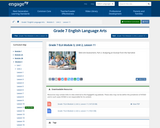
In this lesson, students take the Mid-Unit 2 Assessment Part 2.
- Subject:
- English Language Arts
- Material Type:
- Lesson Plan
- Provider:
- EngageNY
- Author:
- Expeditionary Learning
- Date Added:
- 04/04/2014

In this lesson, students take the Mid-Unit 2 Assessment Part 2.
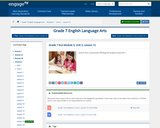
In this lesson, students start their End of Unit 2 Assessment. Before they begin writing, they will re- familiarize themselves with the rubric and use it to assess the Model Essay: “Telling the Truth about Slavery.”
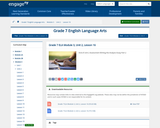
In this lesson, students finish their End of Unit 2 Assessments. They should especially apply their work with sentence structure to this essay. Also in this lesson, students participate in an independent reading check-in. Use whichever routine you have established with your class for these check-ins.
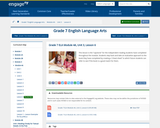
This lesson is the “capstone” for the independent reading students have completed throughout the module. Students step back and take an evaluative approach to the book they have completed by creating a “cheat sheet” to which future students can refer to see if the book is a good match for them.
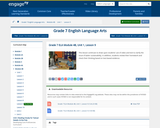
This lesson continues to draw upon students’ use of video and text to clarify the issue of water sustainability. In addition, students review their homework and check their thinking based on text-based evidence.
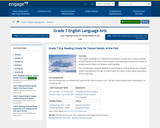
This English Language Arts /Literacy Unit empower students with a critical reading and writing skill at the heart of the Common Core: Reading complex texts closely to analyze textual details and deepen understanding.
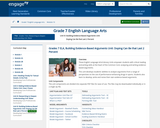
These English Language Arts/Literacy Units empower students with critical reading and writing skills at the heart of the Common Core: analyzing and writing evidence-based arguments.
This unit develops students’ abilities to analyze arguments from a range of perspectives on the use of performance-enhancing drugs in sports. Students also learn to develop, write and revise their own evidence-based arguments.
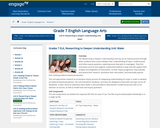
The Researching to Deepen Understanding units lay out an inquiry process through which students learn how to deepen their understanding of topics. Students pose and refine inquiry questions, exploring areas they wish to investigate. They find and assess sources and organize researched material in ways that will support their analysis and integration of information.

This activity emphasizes the importance of teaching reading and writing strategies for students to use with informational text.
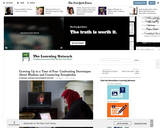
Students read about what it"™s like to be a Muslim teenager growing up in America at this moment, then consider ideas for countering stereotypes and Islamophobia. Lessons include guided informational readings, research and writing suggestions, videos, and resources to continue the discussion.
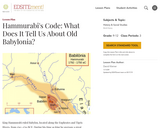
Students learn about life in Babylonia through the lens of Hammurabi's Code. This lesson is designed to extend world history curricula on Mesopotamia and to give students a more in-depth view of life in Babylonia during the time of Hammurabi.
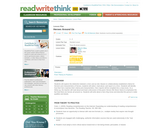
Students will explore the distinction between a hero and an idol. Based on collaboratively established criteria for heroism and characteristics of heroes, students will select, read about, and report on a hero. Students will identify how their hero matches their criteria and characteristics. Hero reports will be compiled into a class book. As a follow-up, the teacher will read aloud and lead a discussion of the poem Heroes We Never Name to emphasize the fact that there are heroes all around us. Students will write about a hero they know and describe this person's noble qualities and deeds.

This resource includes informational paried passage mini-assessment that includes two articles and one accompanying recording, thirteen text-dependent questions (including one optional constructed-response prompt for students), and explanatory information for teachers regarding alignment to the CCSS. Articles included are “High Schools Starting Later to Help Sleepy Teens,†by Michelle Trudeau and “High schools will keep starting too early. Here’s why" by Dan Weissman.

This resource is a Common Core aligned reading passage with textual analysis questions about main idea and characterization.
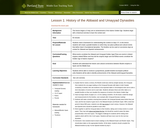
This lesson begins a 5-day unit on achievements of the Islamic Golden Age. Students begin with a historical overview to learn the context and sequence of events that follow. Students need a framework for understanding the content on days 2-5. In this lesson, students will create a parallel timeline on which they can place political and cultural events that define Islam's foundational dynasties. The timeline can be used on successive days as context for Abbasid and Spanish achievements. Students will be able to construct a proportional, parallel timeline to compare political units. Students will be able to identify achievements of the Abbasid and Umayyad Dynasties.

This lesson and resource uses headline articles to help students read effectively by distilling main ideas from an informational text.

In this reflective essay, Chief Dan George compares his native North American culture with that of white culture. In this CCSS lesson, students will explore this essay through text dependent questions, academic vocabulary, and writing assignments.

This resource is a nonfiction, Common Core aligned reading passage with textual analysis questions about main idea, characterization and inferences.
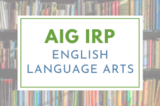
In this lesson, students will read and listen to/view a speech by Jesse Jackson during the 1988 Democratic National Convention. Students will deeply analyze the speech for content and purpose, focusing on the relevancy and effectiveness of Jackson’s personal story that he uses to conclude his speech. Students will analyze how this concluding section contributes to the whole speech and to the development of ideas expressed throughout the speech. Students will then independently complete a RAFT assignment in which they may self-select the Role, Audience, and Format; all students will have the same topic – reaction to hearing the speech. The RAFT writing will further explore the impact of the personal testimony on the speech as a whole. This lesson was developed by NCDPI as part of the Academically and/or Intellectually Gifted Instructional Resources Project. This lesson plan has been vetted at the state level for standards alignment, AIG focus, and content accuracy.

In this lesson and resource, students practice identifying main ideas in informational text and distinguish between explicit and implicit statements.